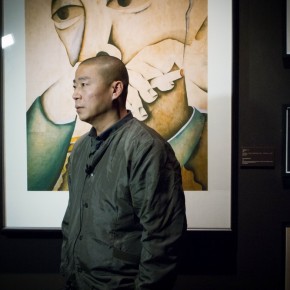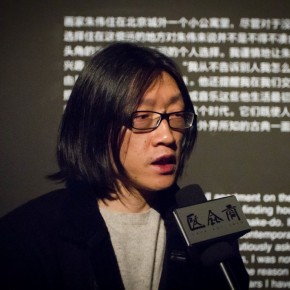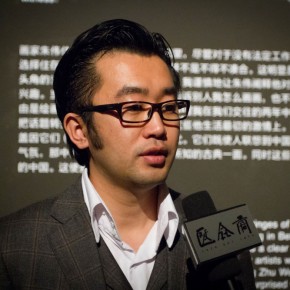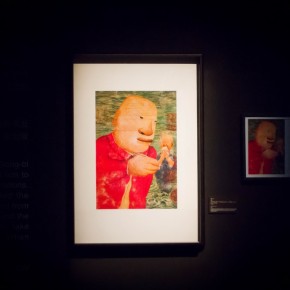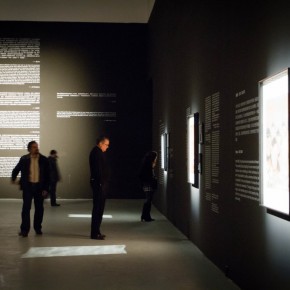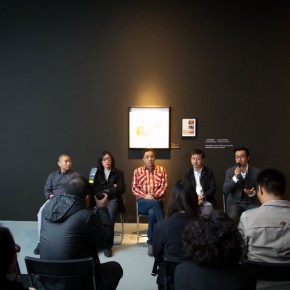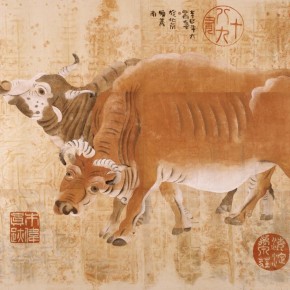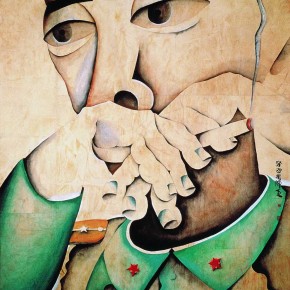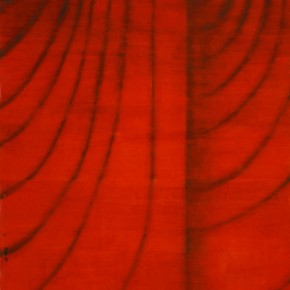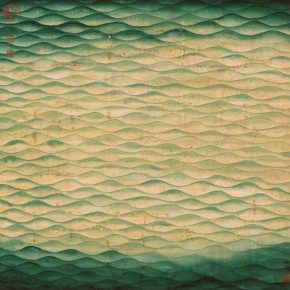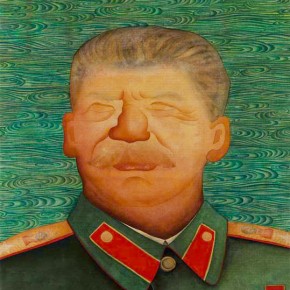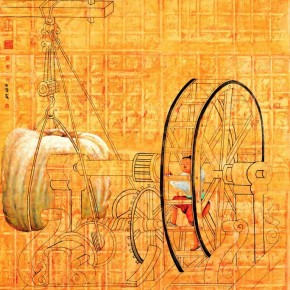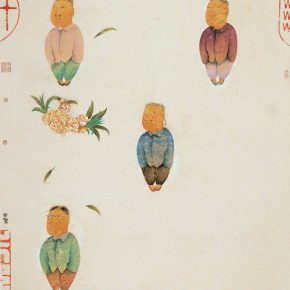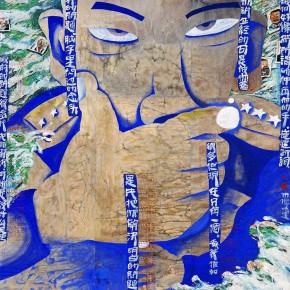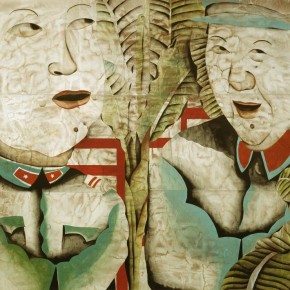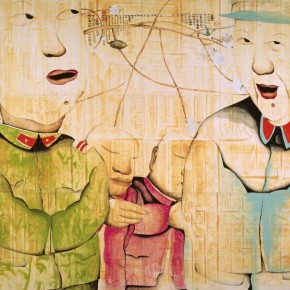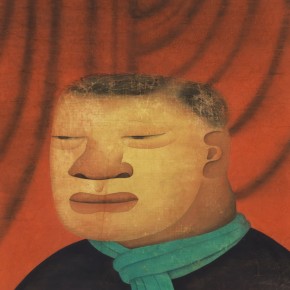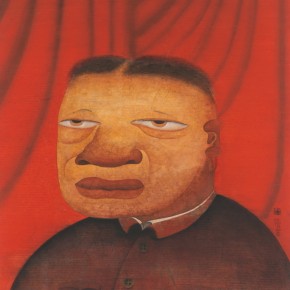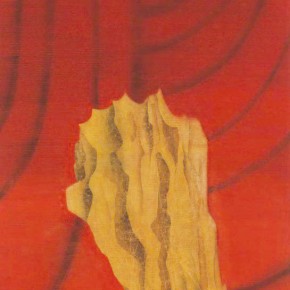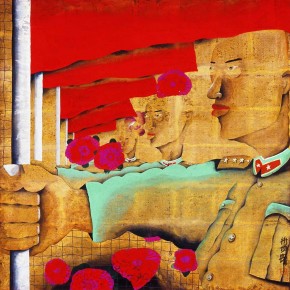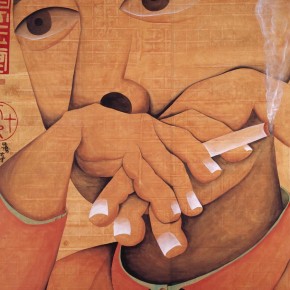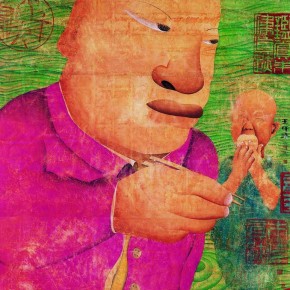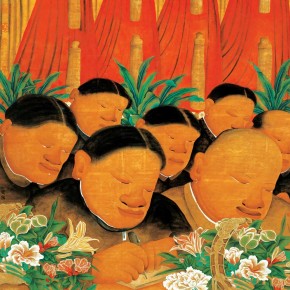
Curated by Zhu Zhu, the solo exhibition of Zhu Wei opened at the second floor of the exhibition hall of building 1 in Today Art Museum in the afternoon of November 3, 2013. The exhibition is co-organized by Today Art Museum, National Museum of Indonesia, Museum of Contemporary Art Singapore, and Art Museum of Nanjing University of the Arts, sponsored by Coca-Cola. Different from the opening of most exhibitions, Zhu Wei had prepared neither any drinks nor snacks for the presented audience, nor an official opening ceremony, but launched a media group interview ahead of the start of the exhibition, and Li Xiaoshan, Director of the Art Museum of Nanjing University of the Arts, Lu Hong, art director of Shenzhen Art Museum, Gao Peng, executive director of the Today Art Museum, and curator Zhu Zhu attended the media group interview, briefly introducing and explaining the works by Zhu Wei.
Initially, Gao Peng gave a speech, he said Zhu Wei’s solo exhibition was the last major exhibition in 2013, internationally acclaimed artist Zhu Wei gave lots of guidance and help to the descendants, and there was humility, he hoped that Zhu’s works would be appreciated by domestic audiences. In the view of curator Zhu Zhu, Zhu Wei had adhered to the idea that was “brush and ink goes with the era”, meanwhile learning of the traditional language of brush and ink for the contemporary expression, different from other artists of the time, Zhu found out early on the way to fit the age, as Zhu was both the practitioner and a bystander in contemporary art. In the eyes of Li Xiaoshan, artist Zhu Wei had a history of brush and ink work and Zhu’s art creation had very strong vitality. Lu Hong believed that Zhu Wei had made a contribution that introduced traditional Chinese meticulous (Gong-bi) painting to the performance of contemporary art themes, and Zhu followed the graphic and decorative principles of traditional Chinese meticulous painting to perform their current life, therefore his works were worth careful study.
For the first time, Zhu Wei applies the combination of literature and works for the interpretation of artistic creations over the years in an exhibition, presented more than 20 representative works in 1988 going through to 2013, such as “Applying the Brushstrokes in Bada Shanren’s Landscape Painting to Drawing the Figures in the Story of Beijing No.1” in 1988, the representative works from 1990s including “China China”, “Utopia”, “The Story of Beijing", “Sweet Life”, “The Ink and Wash Research Lectures”, “Mountain Across the River”, etc., to outline an exploring and developing path of Zhu’s contemporary ink and wash with the use of the print of the era. The arrangement of the exhibition is like the personality of the artist Zhu Wei, with a low-key, simple but profound meaning. Second floor and side hall of building 1, Today Art Museum is all painted black, in the dim halls, the artworks and literature are very eye-catching in the light, showing the beauty of minimalism, seriously telling Zhu Wei’s history of art.
Zhu Wei was born in Beijing in 1966, as early as 1993 his Chinese ink paintings appeared in major international exhibitions, he was also among the very first group of distinguished contemporary Chinese artists recognized by the international art audience in the 1990s. Zhu Wei was the first artist to adopt meticulous (Gong-bi) ink painting language into Chinese Contemporary art scene, when many Chinese new artists were working on “political pop” and “ironic realism” with the use of oil painting, Zhu was exploring the possibility to reflecting contemporary Chinese political and social life with traditional meticulous ink and wash. His motifs differentiated his art from the traditional meticulous ink paintings, but the techniques Zhu employed, such as coloring, outlining, blending and so on, this still remains the fundamental characteristic. The dramatic contrast between traditional art language and contemporary political social motifs makes his art irresistibly appealing.
As the preface of the exhibition said, Zhu Wei is said to represent the artists growing together with Chinese contemporary art, reflecting both the traditional Chinese painting techniques and academic system, ’85 New Wave, Tiananmen protest in 1989 and after Tiananmen protest left a distinctive mark on them. The unique sensitive, stubborn and self-control of his personality, respect and reflection on oriental tradition, learning and absorption of Western thoughts, as well as observation and critique of current society, are mixed and constructed to be a special appearance of the exhibition. Different from more than 200 exhibitions of Zhu Wei ever seen, the literature tells that the artistic memories belonged to an era with an historic present sense, allowing the audience to appreciate the works and it is convenient to return to the “present”, combing through the developing history of Zhu Wei and even Chinese contemporary ink and wash with the display of the works and literature.
Journalist: Ye Yuanfeng, Photo: Yang Yanyuan/CAFA ART INFO
Translated by Chen Peihua and edited by Sue/CAFA ART INFO


